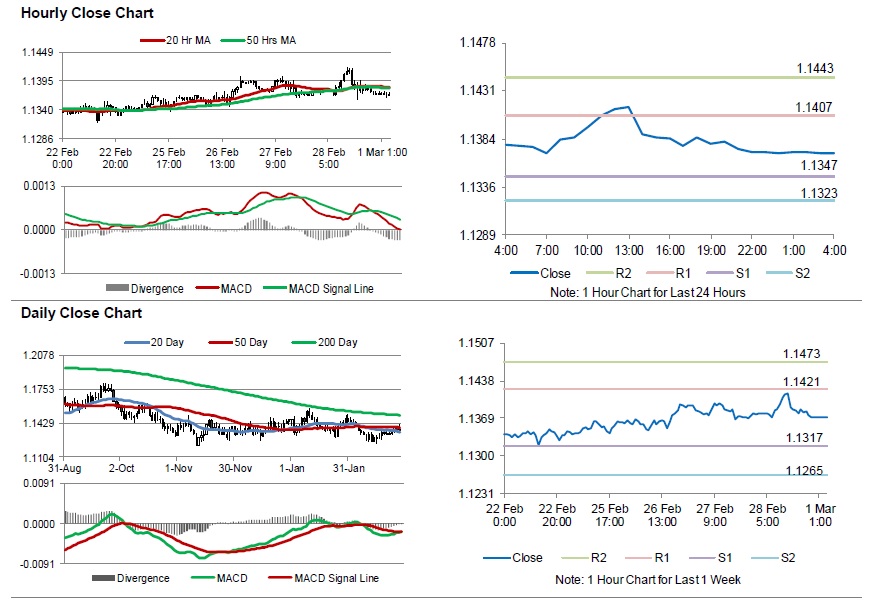For the 24 hours to 23:00 GMT, the EUR slightly declined against the USD and closed at 1.1371.
The US dollar rose against a basket of currencies yesterday, following stronger than expected US fourth quarter gross domestic product (GDP) data.
In economic news, Germany’s preliminary consumer price index (CPI) advanced 1.6% on an annual basis in February, higher than market consensus for a gain of 1.5%. In the prior month, the CPI had recorded a rise of 1.4%.
In the US, data indicated that the US preliminary annualised GDP climbed more than expected by 2.6% on a quarterly basis in 4Q 2018, compared to a rise of 3.4% in the previous quarter. Market participants had anticipated the GDP to advance 2.2%. Moreover, the nation’s Chicago Fed Purchasing Managers’ Index jumped to a level of 64.7 in February, surpassing market expectations for an advance to a level of 57.5. The index had registered a level of 56.7 in the previous month.
Meanwhile, the number of Americans filling for jobless claims climbed to a level of 225.0K on a weekly basis in the week ended 23 February 2019, compared to a level of 216.0K in the prior week. Market participants had envisaged initial jobless claims to advance to a level of 220.0K.
In the Asian session, at GMT0400, the pair is trading at 1.1370, with the EUR trading a tad lower against the USD from yesterday’s close.
The pair is expected to find support at 1.1347, and a fall through could take it to the next support level of 1.1323. The pair is expected to find its first resistance at 1.1407, and a rise through could take it to the next resistance level of 1.1443.
Going forward, traders would keep an eye on the Euro-zone’s unemployment rate for January and the CPI for February along with Germany’s retail sales for January and unemployment rate for February, set to release in a few hours. Also, the Markit manufacturing PMI for February, slated to release across the euro-bloc, will keep traders on their toes. Later in the day, the US manufacturing PMI and the US ISM manufacturing PMI and the Michigan sentiment index, all for February, along with US personal income and personal spending, both for December, will garner significant amount of investors’ attention.
The currency pair is trading below its 20 Hr and 50 Hr moving averages.

